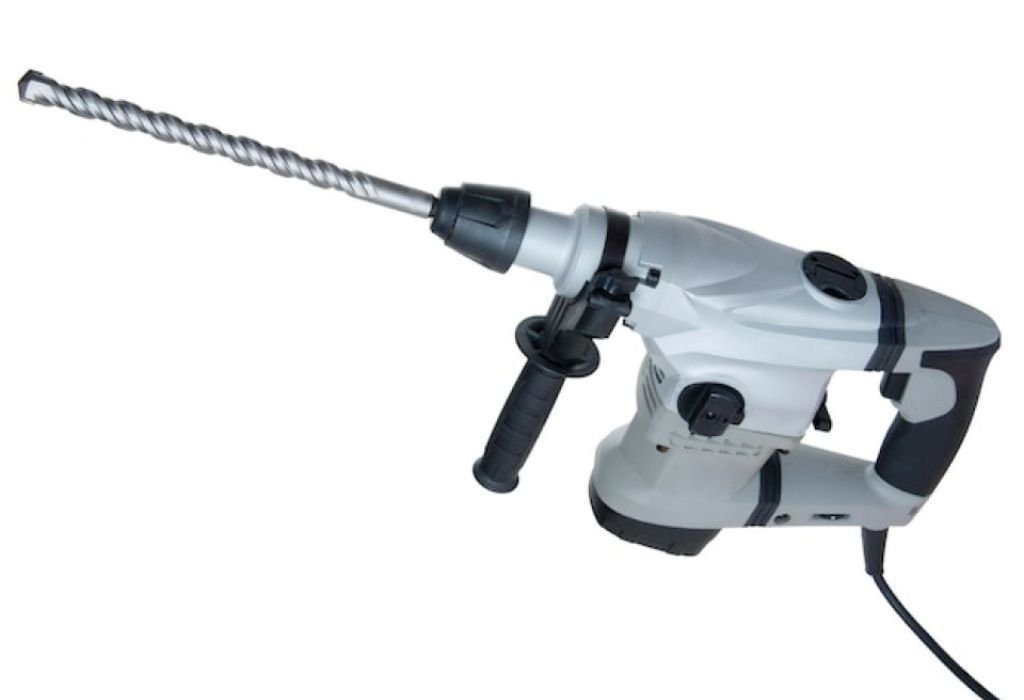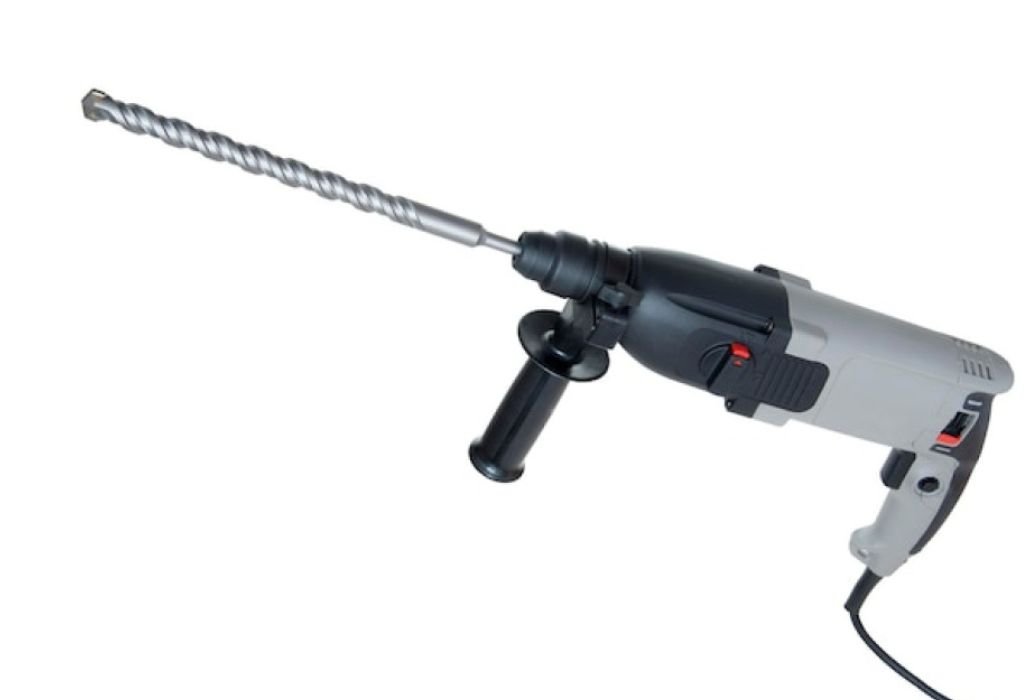Picture this: you’re on a project site, tightening stubborn lug nuts on a vehicle. Instead of reaching for an impact wrench, someone suggests a rotary hammer.
The idea sparks curiosity—can these two heavy-duty tools really do the same job?
At first glance, both tools look powerful and rugged, built for demanding work. But their design and purpose couldn’t be more different.
A rotary hammer is engineered to drill and chisel through tough materials like concrete and stone, making it indispensable in masonry and demolition.
An impact wrench, on the other hand, is designed to deliver high-torque rotational force, loosening or tightening nuts and bolts with ease.
Confusing these tools is more than just a beginner’s mistake—it can lead to wasted effort, damaged equipment, or even safety hazards.
For instance, using a rotary hammer to replace an impact wrench is like trying to cut wood with a chainsaw chain turned backward: the wrong tool simply won’t deliver the results you need.
The global power tool market surpassed $40 billion in 2023 (Grand View Research), reflecting a growing demand for specialized tools tailored to specific tasks.
Knowing what each tool is built for not only saves time but also improves efficiency and safety on the job.
In this guide, we’ll explore whether a rotary hammer can substitute for an impact wrench. By comparing functions, strengths, and limitations, you’ll gain clarity on when to use each tool and why making the right choice matters.
Understanding the Basics of a Rotary Hammer

A rotary hammer is a heavy-duty power tool designed for drilling and chiseling tough materials like concrete, stone, and brick. It uses a piston-driven hammering mechanism that delivers strong impacts while the bit rotates.
This tool is most often seen in construction projects where standard drills cannot handle the hardness of materials. Its ability to provide both rotation and hammer force makes it perfect for masonry jobs.
Can a rotary hammer drive bolts?
No, it cannot fasten or loosen bolts.
Does a rotary hammer provide torque?
It provides impact force, but not the rotational torque needed for fasteners.
Is it suitable for metal?
No, it is designed for masonry and stone.
Can it replace a regular drill?
Yes, for heavy-duty drilling tasks, but not for precision drilling in wood or metal.
Does it require special bits?
Yes, rotary hammers use SDS or SDS-Max bits, which are designed to withstand high impact.
Understanding the Basics of an Impact Wrench
An impact wrench is a power tool built to apply sudden, high-torque rotational force. It is widely used in automotive repair, construction, and industrial work.
The tool is ideal for loosening or tightening nuts and bolts that are stuck or require high torque. Many mechanics rely on it daily for efficiency.
Can an impact wrench drill holes?
No, it cannot drill or chisel materials.
What powers an impact wrench?
It can be powered by compressed air, electricity, or rechargeable batteries.
Is torque adjustable?
Yes, many impact wrenches come with variable torque settings.
Do they require special sockets?
Yes, impact sockets are required to handle the stress of high torque.
Can they damage bolts?
Yes, excessive torque can strip or snap fasteners.
Rotary Hammer vs. Impact Wrench: Core Differences
At first glance, both tools may look similar in size, but their purposes are completely different. The rotary hammer is designed for impact drilling, while the impact wrench is engineered for fastening.
The difference lies in the type of force each produces. Rotary hammers generate forward impact for penetration, while impact wrenches create rotational impact for torque.
Is a rotary hammer stronger than an impact wrench?
No, their strengths are applied differently.
Can an impact wrench replace a rotary hammer?
No, it lacks the forward hammering motion needed for drilling.
Are they interchangeable?
No, each tool serves a specialized purpose.
Which is safer for bolts?
An impact wrench is safer because it applies controlled torque.
Which tool is heavier?
Rotary hammers are usually heavier due to their piston mechanism.
Practical Scenarios: When to Use Each Tool
Choosing between the two depends on the nature of the job. Using the wrong tool not only reduces efficiency but can also damage the material or fasteners.
A rotary hammer is the right choice for construction jobs like drilling into walls or breaking tiles. An impact wrench is best suited for automotive repair or projects that involve heavy bolts and nuts.
Should you use a rotary hammer on lug nuts?
No, it is not capable of applying torque.
Should you use an impact wrench on concrete?
No, it cannot penetrate or break masonry.
Can they be used together?
Yes, on worksites where both drilling and fastening are needed.
Which tool is more versatile?
Impact wrenches are more versatile in mechanical and automotive fields.
Which is better for demolition?
The rotary hammer is better for breaking tiles, bricks, and concrete.
Safety Considerations
Safety is critical when working with high-powered tools. Each tool has unique hazards, and misuse can cause injuries.
Impact wrenches can strain the wrist if torque is not managed correctly. Rotary hammers create strong vibrations that can lead to long-term hand and arm fatigue.
Do you need safety glasses?
Yes, always wear protective eyewear.
Do you need hearing protection?
Yes, both tools produce loud noise that can damage hearing.
Is vibration harmful?
Yes, prolonged use of rotary hammers can cause vibration-related injuries.
Should gloves be worn?
Yes, gloves improve grip and reduce vibration exposure.
Is tool misuse risky?
Yes, using the wrong tool can damage materials and cause accidents.
Maintenance Tips for Longevity

Proper maintenance ensures both tools perform reliably and last longer. Regular checks help prevent costly breakdowns.
Rotary hammers should be lubricated frequently to keep the piston mechanism working smoothly. Impact wrenches require clean air supply (for pneumatic models) and regular socket inspection.
How often should you lubricate a rotary hammer?
Every few uses, depending on workload and manufacturer guidelines.
How to maintain an impact wrench?
Keep sockets in good condition and check for loose components.
Do batteries need care?
Yes, avoid deep discharges and store them properly.
Should tools be cleaned after use?
Yes, remove dust, grease, and debris after every job.
Can poor maintenance reduce power?
Yes, neglecting maintenance leads to reduced performance and tool failure.
Final Verdict: Can a Rotary Hammer Do What an Impact Wrench Does?
The direct answer is no. Although both tools deliver power, their mechanisms and applications are very different.
A rotary hammer is designed for construction tasks involving masonry and concrete. An impact wrench is designed for fastening tasks requiring torque.
Can one tool replace the other?
No, they serve different purposes.
Which is better for beginners?
It depends on the job—rotary hammers for drilling, impact wrenches for fastening.
Can owning both be useful?
Yes, professionals often keep both for complete versatility.
Which is more common in workshops?
Impact wrenches are more common in automotive and repair shops.
Which is more specialized?
Rotary hammers are specialized for construction and demolition.
Conclusion
A rotary hammer cannot do what an impact wrench does, and vice versa. Each tool has a unique role that contributes to efficiency, safety, and performance in its respective field.
If you need to drill or chisel concrete, the rotary hammer is the right choice. If you need to loosen or tighten bolts, the impact wrench is essential. The best results always come from using the correct tool for the job.

I’m John F. Nicholas, the founder, lead writer, and drill enthusiast behind 101drill.com. With years of hands-on experience in power tools and DIY projects, I created this platform to share practical knowledge, expert tips, and real-world insights to help others master the art of drilling.
